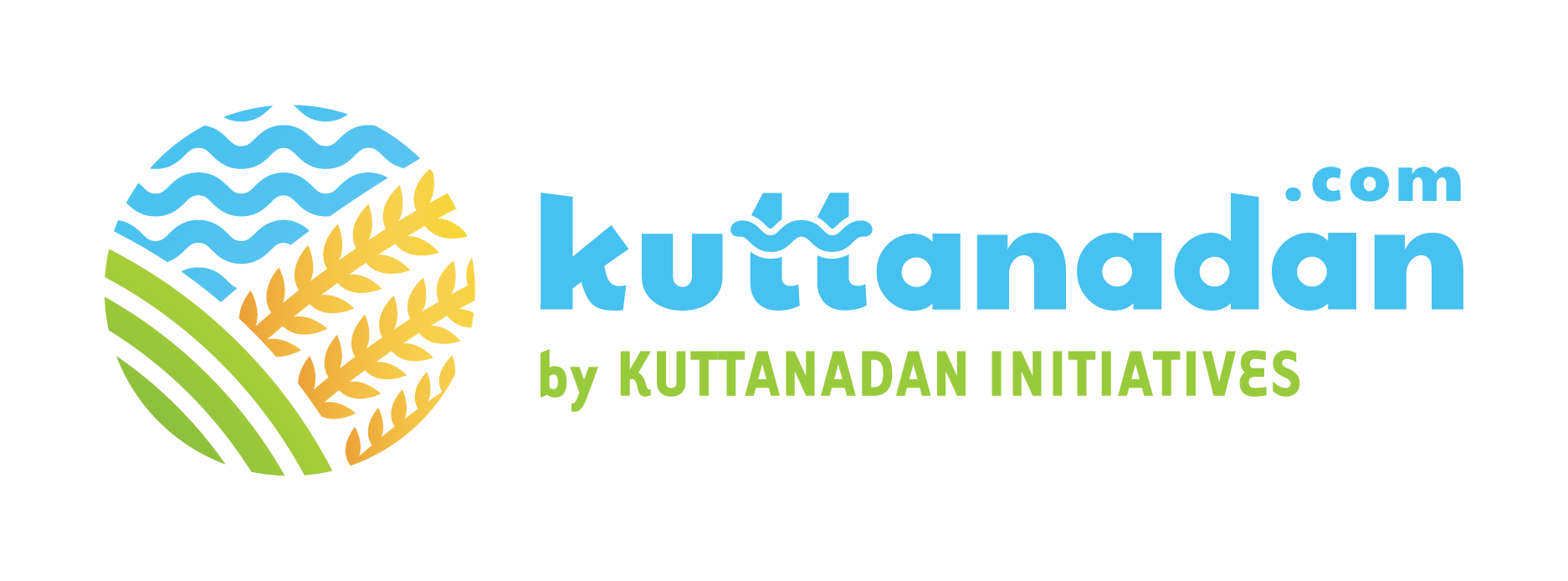Products and Livelihoods of Kuttanad
Kuttanad, the rice bowl of India, with its enchanting beauty, entices tourism with more than just its surroundings. Additionally, the land, abundant with possibilities along with the fervor of its natives, reap magical results.
Farm Produce
With its wealth of paddy crops, Kuttanad is the ‘Rice Bowl of Kerala’ in the very heart of the Alappuzha district backwaters.
A vast area of reclaimed land, separated by dikes from water, that is higher than it appears. The soil in Kuttanad is a varied combination of sand and clay. Generally, the soil is highly acidic in most low-lying areas and contains salts. Kayal lands, karappadams and Kari lands comprise the wetland area of the region, depending on the type of soil. The Kuttanad Below Sea-level Farming System (KBSFS) is distinctive, as it is the only system in India that practices rice cultivation below sea level.
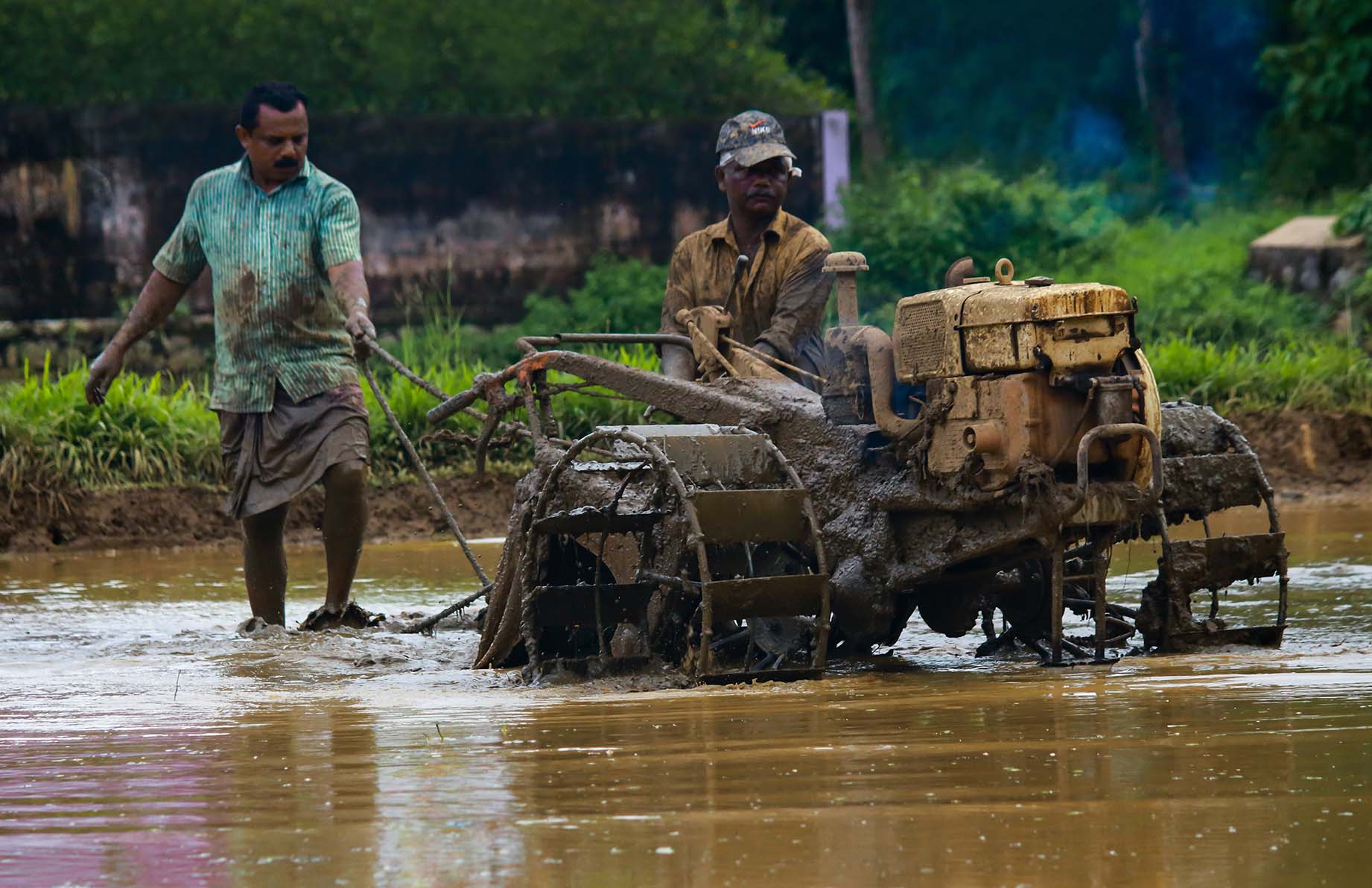
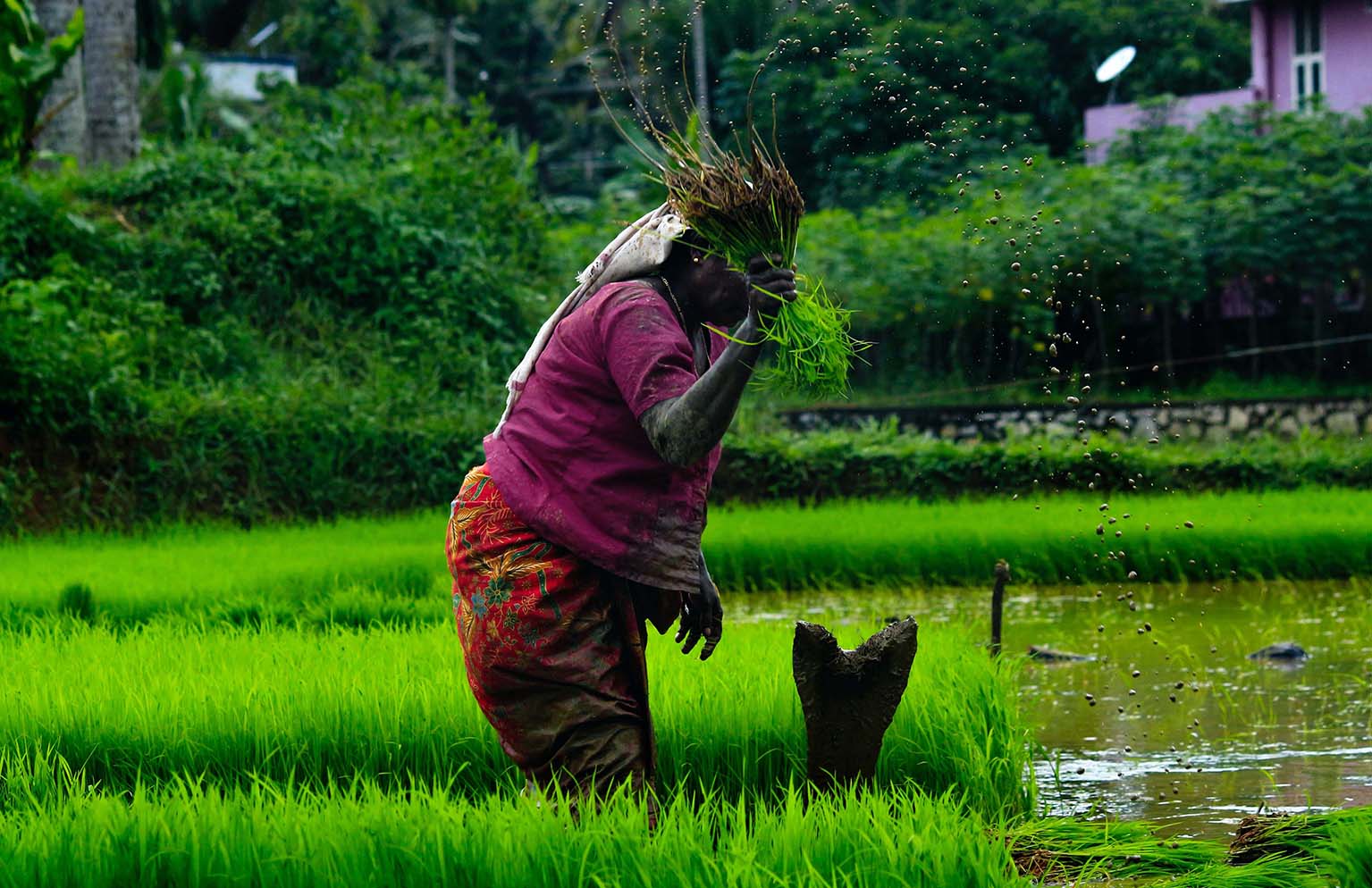
Image 1: Photo by Nandhu Kumar / Unsplash | Image 2: Photo by Nandhu Kumar / Unsplash
Natural Resource
Kuttanad, the area with the lowest altitude in India, part of India’s largest wetland, Vembanad Kole, the Kuttanad region, occupies more than 110,000 hectares.
Goose rearing, poultry, coir making, fisheries, and horticulture are the common sources of livelihood that help conserve biodiversity.
Due to a combination of saline and freshwater, the wetland has a lush diversity of clam, shrimps, and live and sub-fossil deposits, several species of finfish, shellfish, the endangered golden catfish, and the endangered golden catfish Pearl spot, and giant freshwater prawns.
With almost 20,000 waterfowls, including the endangered spot-billed pelican, oriental darter, water cock, and black-billed tern, the wetland is remarkable for its migratory bird population.
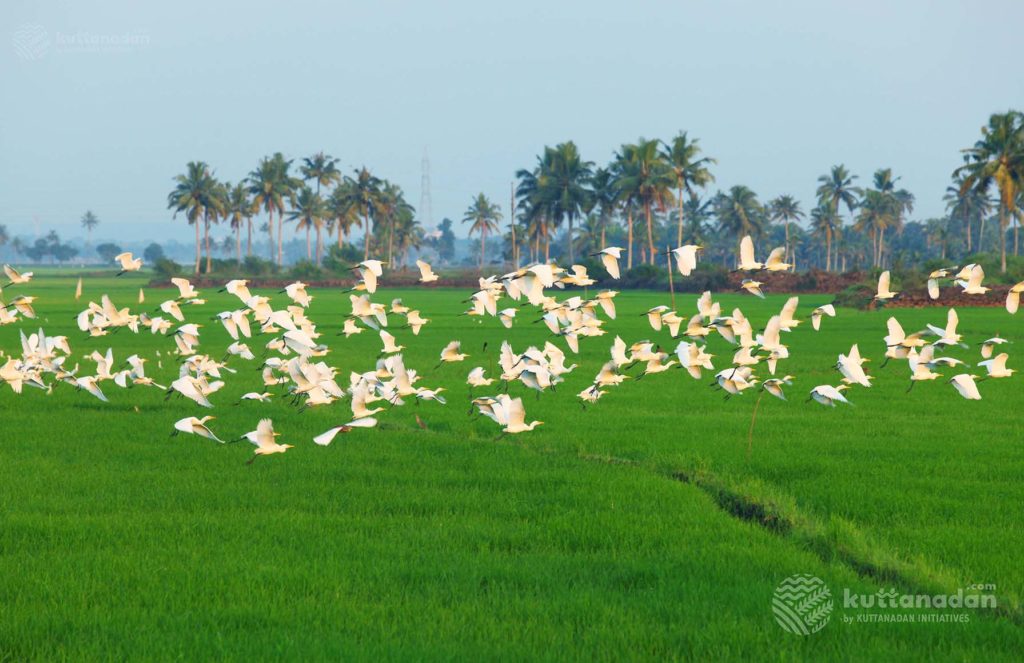
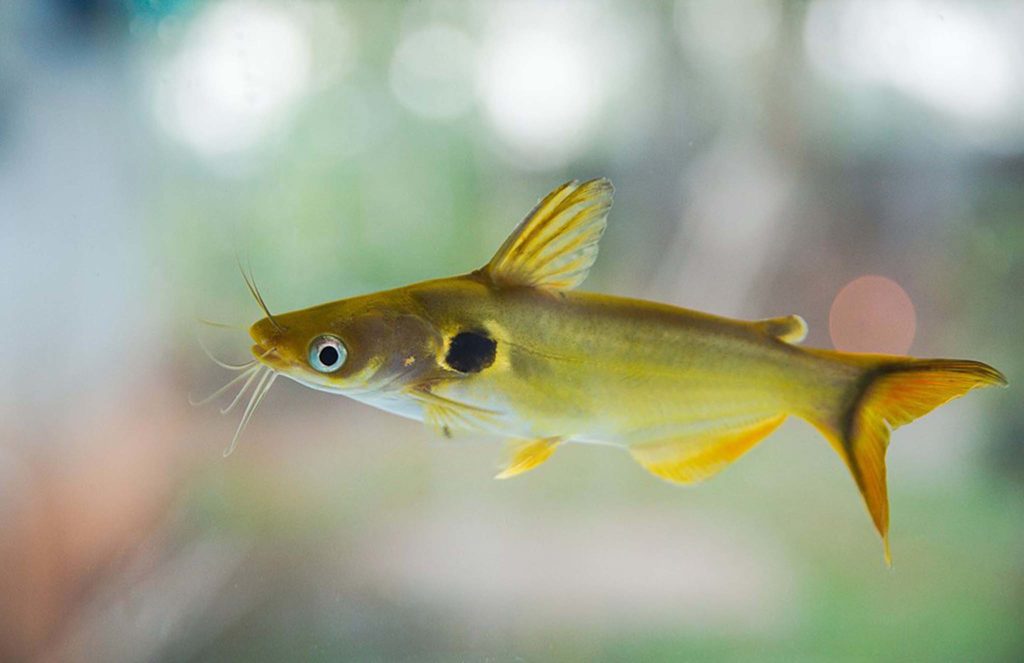
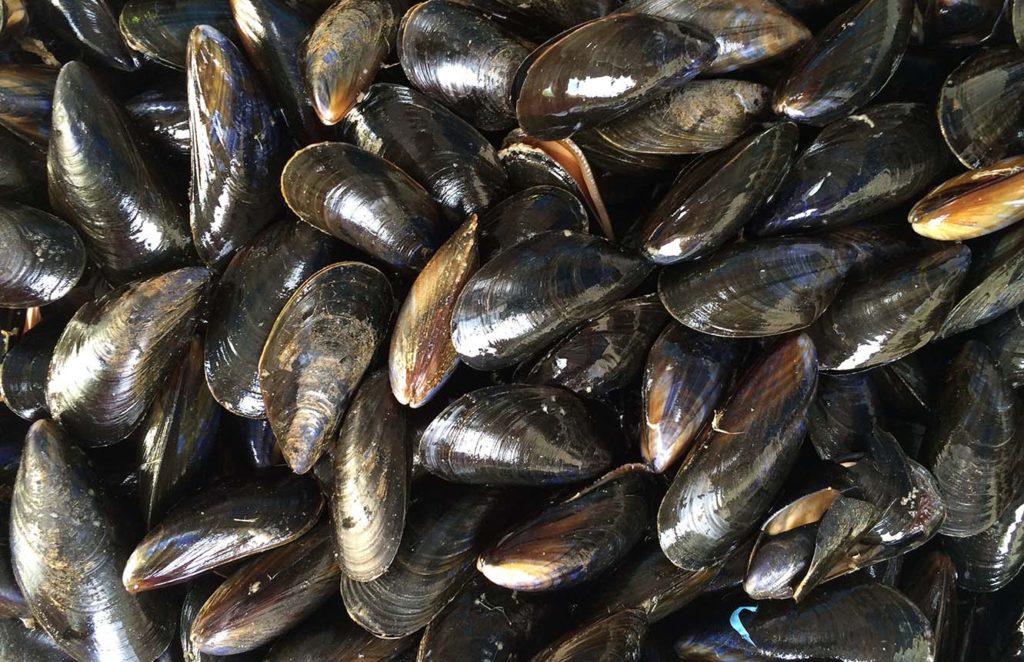
Image 1: Photo by Kuttanadan.com | Image 2: Photo by Jan Joseph George/ CC BY-SA 4.0 | Image 3: Photo by Pxhere / CC0
Handicrafts
Alappuzha and other places in Kuttanad specialise in wall mats, carpets, bags, and furniture. They are made with natural fibres, golden coir, jute, and cane-with hints of colour. Grass, and banana fibre are used to create more ornamental, delicate items. Most handicraft emporia carry a wide range of pattu pai or silky grass mats made from banana fibre.
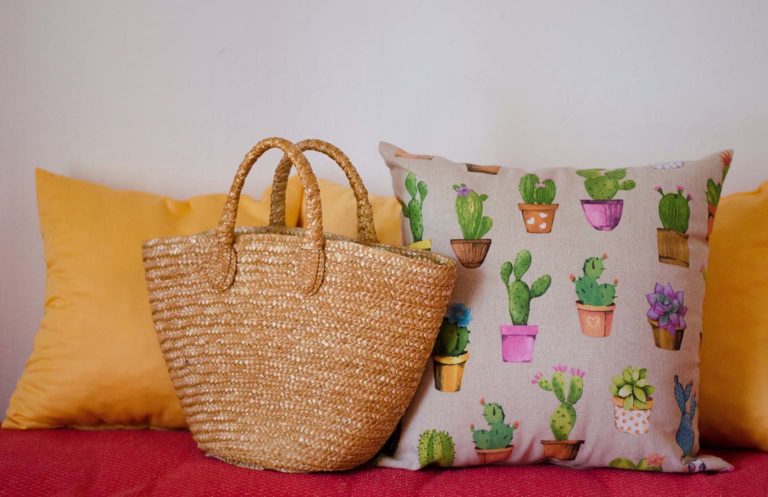

Other Products
Uma, the most popular rice variety in the State, is being cultivated in about 60% of the paddy fields across Kerala. In Kuttanad, the State’s rice bowl, the variety is well-liked and grown in over 90% of fields.
Paddy (Oryza sativa) is the most important crop produced below the sea level in Kuttanad through a special water management process.
Coconut (Cocos nucifera) is the second most important crop raised for livelihood in the Kuttanad agricultural system. The Kuttanad wetland provides suitable growth conditions for the coconut palm.
Banana (Musa paradisiaca) plantation is another critical source of livelihood, developed amidst water abundance like coconut plantations.
Colocasia (Colocasia esculenta) is grown as an essential food crop in Kuttanad.


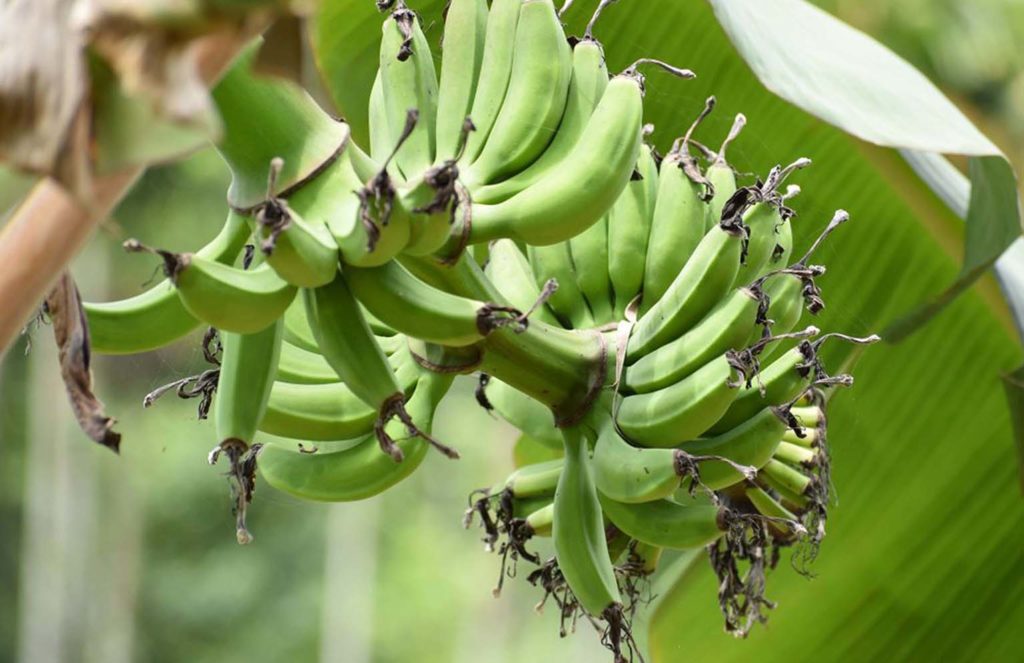
Image 1: Photo by Annie Spratt/ Unsplash| Image 2: Photo by Augustus Binu / CC-By-SA 3.0 | Image 3: Photo by Ajith / CC0
Farm Tourism
The tourists are deserting the modernised backwater tourism with houseboats and moving towards villages. They now prefer the canoes and country boats through small canals and streams in Kuttanad over hour-long houseboat rides. Fishing is one of the main primary sources of livelihood for the people of Kuttanad, and small fishing boats and nets are used. Catching fish manually is also done by the womenfolk and are often engaged in gathering mussels, collecting lime shells, boat rowing & coir making according to season.
Farm tourism and backwater tourism are important sources of income in Kuttanad. Many houseboats ply the backwaters, with tourists coming from around the world over to witness the wonder of Kuttanad.
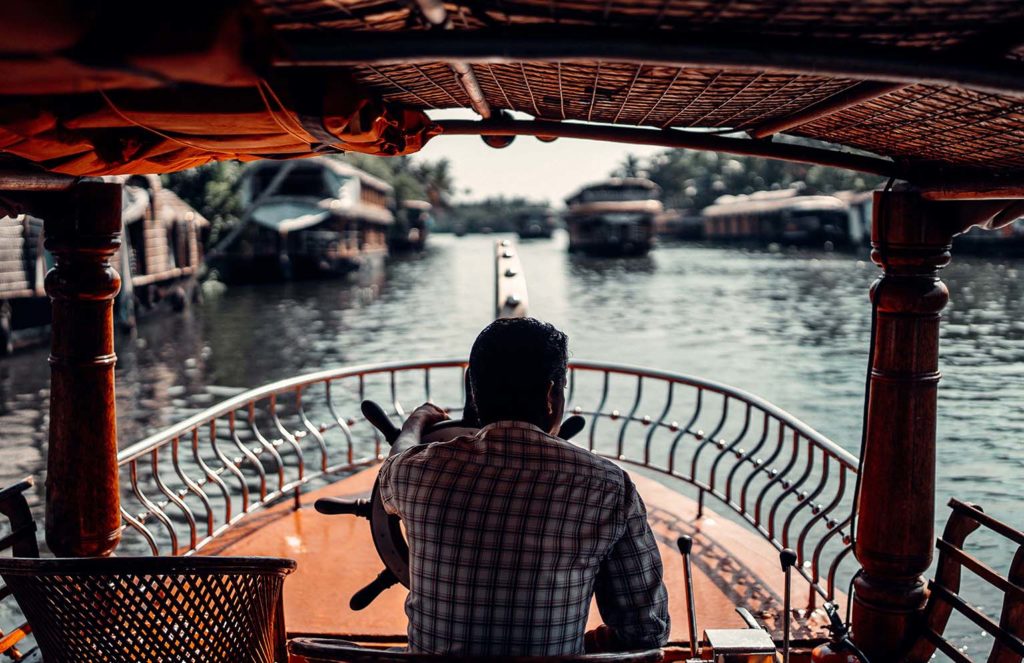
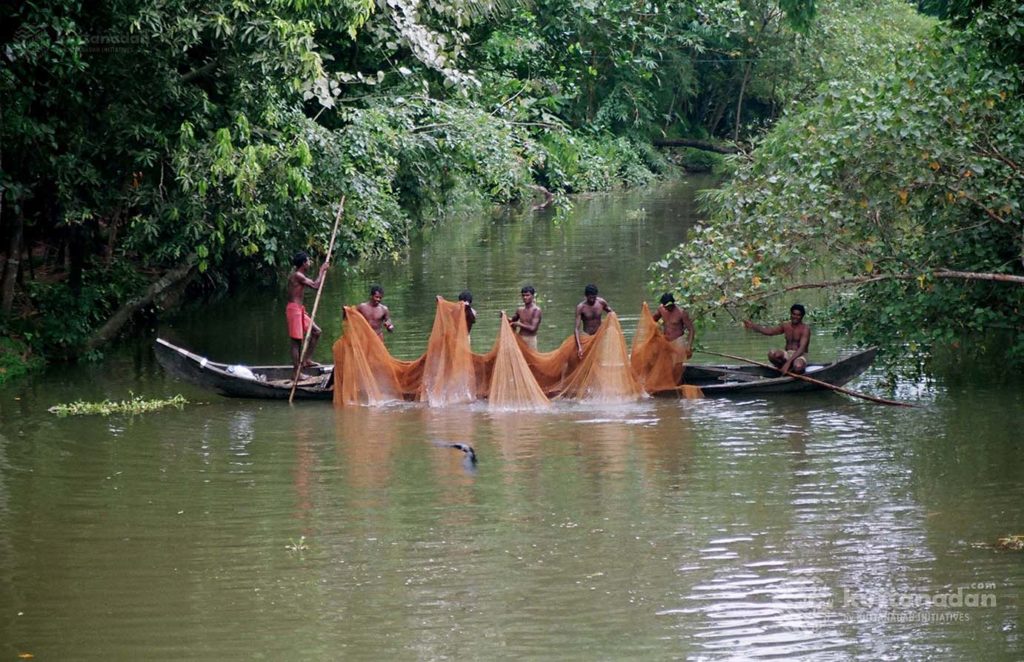
Image 1: Photo by Dexter Fernandes on Unsplash | Photo by Kuttanadan.com
Heritage Tourism
Kuttanad, the land of sparkling emerald backwaters and vast paddy fields, boasts an indigenous agrarian culture. It has been gaining momentum as a hotspot for laid-back village tourism. Kerala celebrates its food culture with many rich heritage sites. Meen Pollichathu, a preparation of steaming marinated fish wrapped in banana leaf, is set to have originated in Kuttanad. Tharavu Mappas (locally bred Kuttanadan duck in coriander flavoured coconut milk-based gravy) and Irachipidi (a thick soupy dish with rice dumplings and meat chunks with gravy) is also one of the notable traditional heritage meals of this region.
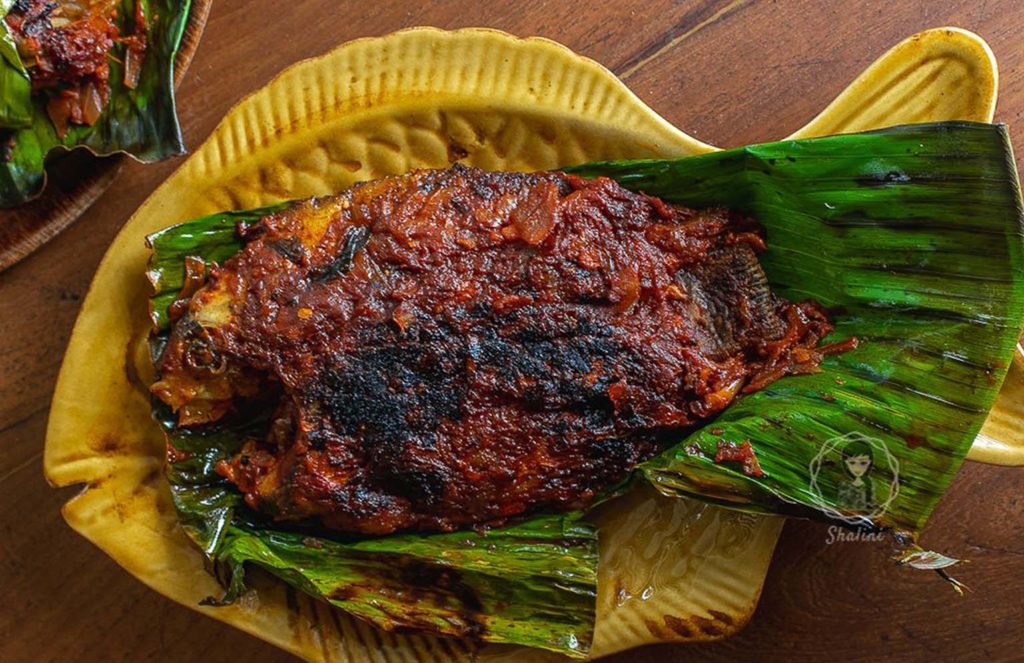
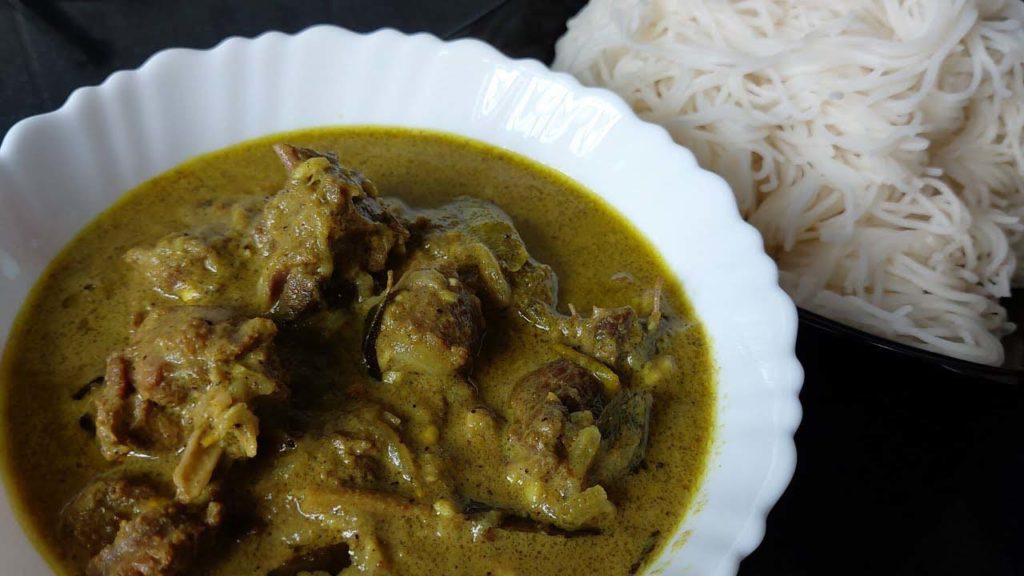
Image 1: Photo by Something's Cooking | Image 2: Photo from Video by Mix Well Cooking / Youtube
Community Tourism
Community Tourism is a type of tourism that invites tourists into common households to explore the nuances of daily life in the region. This form of tourism is a sustainable model of tourism that promotes local homestays, farm visits, cooking and crafting together, storytelling, village tours and more.
Insertion of agro-ecosystems, variety of genes in crops, farm animals, fish, medicinal plants, and promotion of biodiversity mixed with cultural heritage and effective participation of the local communities in the tourism sector can contribute significantly to the sustainable and inclusive development of Kuttanad.
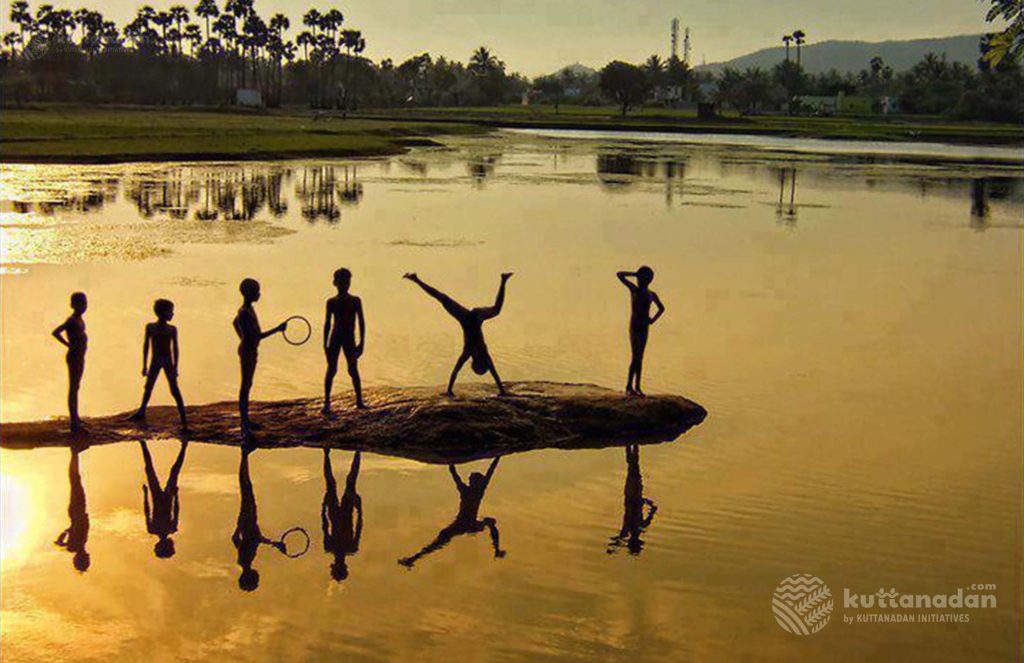
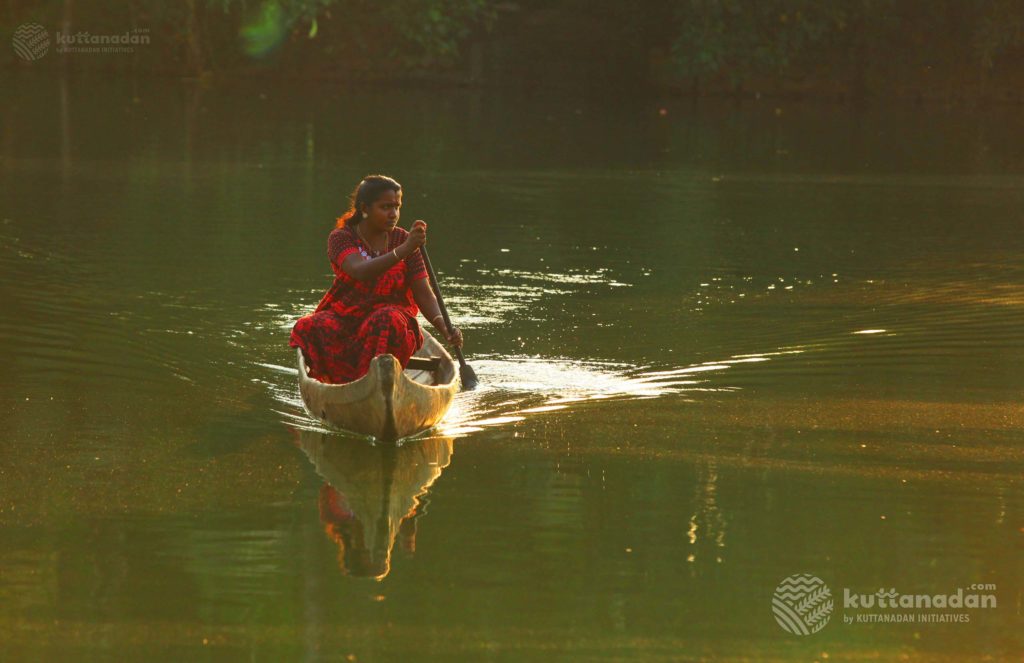
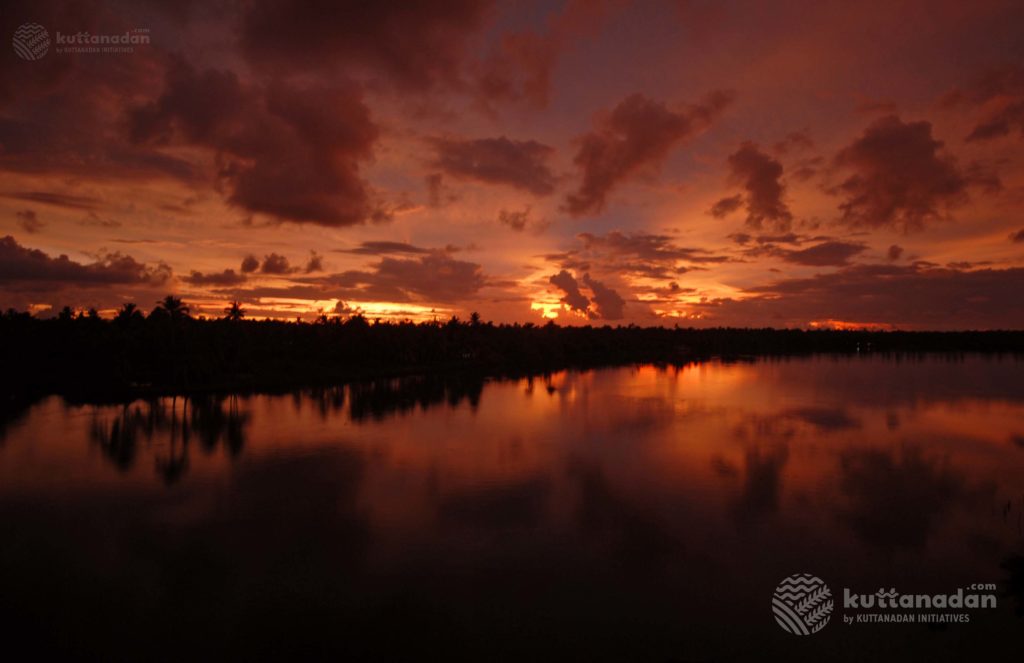
Image 1, 2 & 3: Photo by Kuttanadan.com
